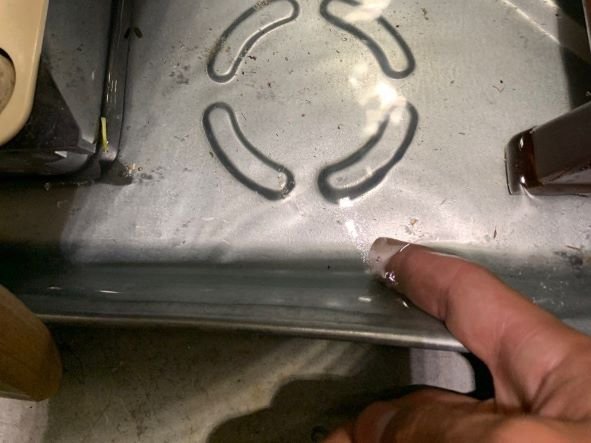The Importance of an HVAC Secondary Condensate Pan
One of the most important tasks your air conditioning system performs is removing condensation from the air. Without this feature, your home would stay humid year-round – unless you live in an actual desert.
That’s why when you start noticing the humidity increasing inside, you should always think about checking your HVAC system. It may have something to do with the condensate drain pan.
If you have no idea what we’re talking about, that’s okay. Unless you’re an HVAC technician yourself, you may have never heard those words put together in that way. Fortunately, that’s what we’re here for!
How a Condensate Drain Pan Works
Your HVAC system cools the air when its evaporator coil fills with super-cooled refrigerant. As your home’s warm air passes through your air conditioning, the mixture of warm air and cool refrigerant creates condensation. Think about all the water that beads up along the outside of a cold glass of water on a scorching July afternoon – then multiply it times several thousand.
That water needs to go somewhere.
Your air conditioning unit uses the condensate drain pan to catch every bit of humidity and excess water that it removes from your indoor air. Then, it safely and effectively disposes of that water outside your home.
When it’s working properly, that is.
Where is the Drain Pan Located?
Your AC unit’s condensate drain pan is not an independent component of the system. It’s connected to the evaporator coil – depending on the type of furnace you have. Furnaces are usually installed vertically or horizontally, either in a closet, garage, or attic depending upon their position. This is the primary drain pan.
Once you know your furnace’s location, you’ll find your drain pan.
Why is a Secondary Drain Pan Needed?
While your condensate drain pan is a very simple component of your HVAC system, it’s one of the most important parts. Without it, you could end up with severe water damage to ceilings due to overflow.
That’s why many HVAC units have a secondary drain pan – also called a backup drain pan. This pan is placed underneath the unit and is large enough to catch every drop of overflow water from the internal drain pan. Secondary drain pans also have their condensate drain lines.
Common Issues You May Find with Your Air Conditioning Drain Pan
Condensate drain pans often come with rolled edges so that once enough water pools up inside of it, it’ll fall out into the secondary drain pan below. These condensate drain pans often include reinforced corners so they’ll stay sturdy and able to hold all the excess water in them securely.
However, even with rolled edges and reinforced corners, these pans can still suffer from some serious damage over time. Here’s how:
Rust
The majority of newer drain pans are made out of plastic, but the really old ones were made out of metal. As everyone knows, exposing metal to a lot of water over the years can lead it to rust and corrode significantly. Those rusty spots become damaged and eventually cause water leaks which should be fixed ASAP.
Cracks
If you have a plastic drain pan, it can crack over time as a result of ever-changing temperatures. The weight of the water itself can also cause strain in most pans. Even the most minor cracks in the pans can let water seep through and cause damage to ceilings in your home – especially if your furnace and evaporator coil are located in your attic.
One sign that you may have a problem is a brown water stain appearing on your ceiling.
Clogged Drain Line
The drain line itself can also clog. This can come from bacteria growth in the line or dust and debris buildup. Since the drain pan catches all the water, homeowners may not realize what all is floating around in their drain pans. Then, it has to deliver that stuff outside the home. After enough time and debris, it’ll clog and water will pool above, causing overflow and costing homeowners an awful lot of money.
Many clogs can be difficult to access. Your technician may need additional time to search for and find the clog.
Conclusion
As you can tell, it’s pretty crucial to have a secondary drain pan attached to your HVAC system to fight condensation. Without the proper system of condensate drain pans and secondary condensate drain pans, you might end up with a serious situation on your hands. If that’s the case, you’ll likely need to call in the professionals at once.
Frequently Asked Questions for HVAC Secondary Drain Pans
1. What is the purpose of a secondary drain pan in an HVAC system?
Answer: The primary purpose of a secondary drain pan in an HVAC system is to provide a backup or safety measure against water damage. It's placed under the HVAC unit, typically an air conditioner or heat pump, to catch condensate that may not be properly drained by the primary pan due to clogging, overflow, or other malfunctions. This helps to prevent water damage to the floors, ceilings, and walls of a building.
2. How does a secondary drain pan differ from the primary drain pan?
Answer: The primary drain pan is usually attached directly to the HVAC unit and collects condensate produced during the cooling process. It has a direct drain line. The secondary drain pan, on the other hand, is larger and sits beneath the entire HVAC unit. It acts as a safeguard, catching any overflow from the primary pan or leaks from the unit. Unlike the primary pan, the secondary pan often has a separate drain line or a float switch to indicate when it's collecting water.
3. When should I check or replace my HVAC secondary drain pan?
Answer: It's a good practice to inspect your secondary drain pan annually, typically before the high-usage season (summer for air conditioners). Look for signs of rust, cracks, or damage. If any of these are present, it's advisable to replace the pan to ensure it functions effectively. Also, if you notice consistent water in the secondary pan, it might indicate a problem with your primary drain system that should be addressed.






